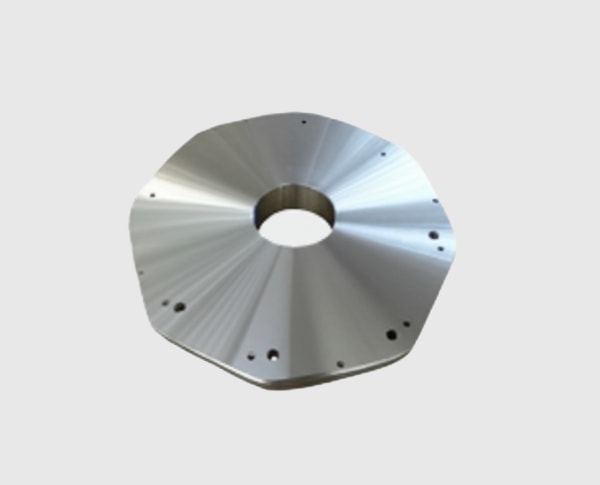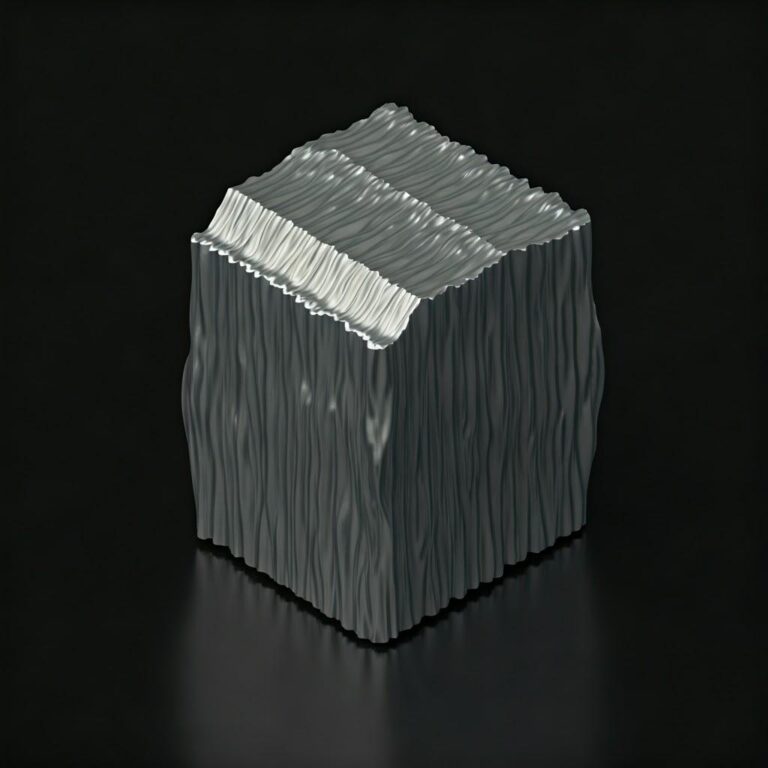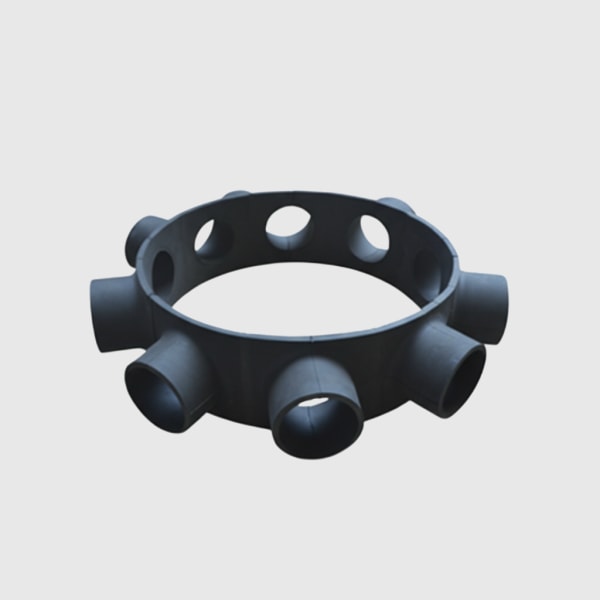Silicon Carbide Bidirectional DC/DC (Energy Storage Interface) Module for UPS DC Bus Enabling Peak Shaving and Black-Start product overview and 2025 market relevance
Pakistan’s coastal ports and connected industrial corridors are converging on a single operational truth: resilient electrification requires intelligent energy storage tightly coupled to clean conversion. The Silicon Carbide Bidirectional DC/DC (Energy Storage Interface) Module for UPS DC Bus Enabling Peak Shaving and Black-Start is Sicarbtech’s purpose-built bridge between battery storage and the UPS DC link at shore-power berths, reefer yards, and crane clusters. By bringing high-frequency, low-loss conversion to the heart of the UPS, the module enables three outcomes that matter most to operators in Karachi and Gwadar: peak shaving to cut tariff exposure, ride-through for grid sags and faults, and true black-start capability when mains vanish without warning.
In 2025, with NEPRA-led policy signals favoring efficiency and reliability, port authorities and EPCs are layering storage onto shore-power systems to stabilize throughput during monsoon storms and summer peaks. The Silicon Carbide Bidirectional DC/DC (Energy Storage Interface) Module for UPS DC Bus Enabling Peak Shaving and Black-Start is engineered from Sicarbtech’s end-to-end SiC stack—crystal growth, epitaxy, device fabrication, and advanced module packaging—so that fast-switching operation at 20–60 kHz becomes an asset, not a thermal liability. In practice, the module maintains high round-trip efficiency, tightly regulates DC bus voltage during sudden crane load steps, and orchestrates seamless transitions between charging, discharging, and standby, all while preserving low harmonics on the AC side through coordination with the active front end.

Silicon Carbide Bidirectional DC/DC (Energy Storage Interface) Module for UPS DC Bus Enabling Peak Shaving and Black-Start technical specifications and advanced features
The Silicon Carbide Bidirectional DC/DC (Energy Storage Interface) Module for UPS DC Bus Enabling Peak Shaving and Black-Start is built around interleaved, high-frequency SiC power stages that minimize ripple, shrink magnetics, and cut conduction and switching losses. The UPS DC bus typically operates from 600 to 1200 V, while the battery interface can be configured across 300 to 800 V depending on chemistry and stack design. With switching at 20–60 kHz, the module achieves tight current control during charge and discharge, enabling smooth transitions between grid-following and grid-supporting modes when paired with Sicarbtech’s silicon carbide three-level high-efficiency rectifier and active front-end power unit.
On the control side, model-based algorithms manage state-of-charge limits, temperature-dependent current derating, and fast bus regulation under transient loads like STS crane hoists. Protective functions include fast overcurrent and short-circuit detection with soft turn-off, bus over/undervoltage protection, isolation monitoring for the battery side, and coordinated fault signaling to the UPS supervisor. Thermal design leans on Sicarbtech’s port-grade assembly practices: high-thermal-conductivity substrates, vapor chamber spreading where needed, gasketed airflow, and corrosion-resistant fasteners and coatings that hold their properties in Karachi’s salt-laden air. Moreover, the Silicon Carbide Bidirectional DC/DC (Energy Storage Interface) Module for UPS DC Bus Enabling Peak Shaving and Black-Start integrates natively with Sicarbtech’s silicon carbide power module online monitoring and health diagnostics acquisition unit, streaming metrics such as round-trip efficiency, temperature margins, charge/discharge cycles, and predicted lifetime to a central dashboard.
For black-start, the Silicon Carbide Bidirectional DC/DC (Energy Storage Interface) Module for UPS DC Bus Enabling Peak Shaving and Black-Start coordinates with the UPS inverter to energize the DC bus from batteries and then sequence AC output formation with appropriate slew rates, allowing critical loads—PLC cabinets, navigation, dispatch centers, and reefer controllers—to come back online without grid presence. Once mains return, the module re-synchronizes, shifts to peak shaving or recharge, and maintains low THD via the AFE’s current shaping.
Operational advantages comparison for the Silicon Carbide Bidirectional DC/DC (Energy Storage Interface) Module for UPS DC Bus Enabling Peak Shaving and Black-Start
| UPS Energy Storage Functions at Pakistani Ports | Silicon Carbide Bidirectional DC/DC (Energy Storage Interface) Module for UPS DC Bus Enabling Peak Shaving and Black-Start | Non-SiC or AC-Coupled Add-ons |
|---|---|---|
| Round-trip conversion efficiency | High due to 20–60 kHz SiC, low Rds(on) | Lower from switching and magnetic losses |
| DC bus regulation under crane steps | Tight, fast current control | Slower response; bus droop events |
| Black-start coordination | Native DC-bus energization and sequencing | Requires complex external orchestration |
| Footprint and thermal load | Compact with reduced thermal footprint | Larger magnetics and cooling |
| Salt-mist environmental resilience | Conformal coatings and sealed airflow | Limited hardening; higher corrosion risk |
Lifecycle and PKR-denominated ROI for the Silicon Carbide Bidirectional DC/DC (Energy Storage Interface) Module for UPS DC Bus Enabling Peak Shaving and Black-Start
| Five-Year Economics | Silicon Carbide Bidirectional DC/DC (Energy Storage Interface) Module for UPS DC Bus Enabling Peak Shaving and Black-Start | Conventional Storage Tie-In |
|---|---|---|
| Demand charge reduction via peak shaving | 10–25% typical improvement | Limited due to slower response |
| Outage recovery and ride-through savings | 40–60% reduction in downtime | Persisting trips and manual restarts |
| Cooling energy consumption | 8–15% lower from efficient heat paths | Higher fan/pump duty |
| Maintenance cost profile | Predictive, scheduled | Reactive, frequent |
| Payback horizon in PKR terms | 24–36 months | 48+ months typical |
System integration elements within the Silicon Carbide Bidirectional DC/DC (Energy Storage Interface) Module for UPS DC Bus Enabling Peak Shaving and Black-Start
| Integration Focus | Silicon Carbide Bidirectional DC/DC (Energy Storage Interface) Module for UPS DC Bus Enabling Peak Shaving and Black-Start Implementation | Operational Impact at Karachi/Gwadar |
|---|---|---|
| UPS coordination | Closed-loop control with DC bus and inverter | Smooth ride-through; safe black-start |
| AFE harmonics | Works with AFE to maintain low THD and PF ≈ 1 | Avoids penalties; cleaner quay bus |
| Battery management | SOC, SOH, temperature-aware limits | Longer battery life; safer operation |
| Environmental hardening | Salt-mist-resistant packaging and filters | Reliability through monsoon seasons |
| Monitoring and analytics | Health diagnostics integration | Data-driven maintenance and spares planning |
Key advantages and proven benefits of the Silicon Carbide Bidirectional DC/DC (Energy Storage Interface) Module for UPS DC Bus Enabling Peak Shaving and Black-Start with expert perspective
The value of the Silicon Carbide Bidirectional DC/DC (Energy Storage Interface) Module for UPS DC Bus Enabling Peak Shaving and Black-Start is most visible in the seconds that matter—the instant a feeder sags or a crane accelerates into a heavy lift. Fast SiC switching and interleaved current control stabilize the DC bus, while dynamic dispatch of battery power avoids AC-side disturbances. As Engr. N. Siddiqui, a power systems advisor to port electrification programs in Pakistan, observed during a 2025 briefing, “When storage sits natively on the DC bus with SiC-class response, black-start becomes routine rather than exceptional, and peak shaving stops being guesswork” (industry notes shared at a Karachi port modernization roundtable). That shift—predictable resilience—translates directly into higher crane availability and more consistent reefer temperatures.
Real-world applications and measurable success using the Silicon Carbide Bidirectional DC/DC (Energy Storage Interface) Module for UPS DC Bus Enabling Peak Shaving and Black-Start
A Karachi reefer terminal paired the Silicon Carbide Bidirectional DC/DC (Energy Storage Interface) Module for UPS DC Bus Enabling Peak Shaving and Black-Start with a 700 V nominal lithium battery stack to buffer compressor clusters. Over six months, demand peaks fell by approximately 18%, shaving tariff exposure and eliminating evening alarms associated with voltage dips. The site recorded a 5–7% reduction in cooling energy tied to lower converter losses and improved DC bus stability.
In a pier-side crane application near Gwadar, the Silicon Carbide Bidirectional DC/DC (Energy Storage Interface) Module for UPS DC Bus Enabling Peak Shaving and Black-Start enabled black-start of the UPS after a feeder trip without waiting for diesel backup. Critical PLCs and auxiliary drives were re-energized within minutes, avoiding hours of manual intervention. Operators noted a 43% reduction in power-quality-related stoppages over two quarters, attributed to coordinated storage dispatch during hoist inrush events.
Selection and maintenance considerations for the Silicon Carbide Bidirectional DC/DC (Energy Storage Interface) Module for UPS DC Bus Enabling Peak Shaving and Black-Start
Selecting the appropriate power class of the Silicon Carbide Bidirectional DC/DC (Energy Storage Interface) Module for UPS DC Bus Enabling Peak Shaving and Black-Start begins with characterizing the DC bus ripple tolerance, expected transient loads from cranes or reefer clusters, and desired ride-through duration. Sicarbtech’s engineering team models phase interleaving, switching frequency, and inductor sizing to meet ripple and thermal targets while maintaining ample headroom for monsoon heat. Battery chemistry and stack voltage inform insulation monitoring, SOC windows, and thermal derating curves. Maintenance relies on reality rather than schedules: embedded sensors report temperature margins, cycle counts, and bus regulation metrics to the health diagnostics platform, which flags when filters need cleaning or when parameter retuning can restore baseline performance.
Industry success factors and customer testimonials around the Silicon Carbide Bidirectional DC/DC (Energy Storage Interface) Module for UPS DC Bus Enabling Peak Shaving and Black-Start
Sustained outcomes depend on deploying the Silicon Carbide Bidirectional DC/DC (Energy Storage Interface) Module for UPS DC Bus Enabling Peak Shaving and Black-Start alongside an NTDC-compliant active front end and a fast static transfer strategy. A terminal electrical superintendent in Karachi shared, “With Sicarbtech’s bidirectional DC/DC on the DC bus, our UPS feels unshakeable. Feeder flickers that used to ripple across the quay now barely register.” This testimonial mirrors feedback from multiple enterprises that transitioned to DC-bus-coupled storage: fewer nuisance trips, shorter recovery times, and a clearer path to green port KPIs.
Future innovations and market trends linked to the Silicon Carbide Bidirectional DC/DC (Energy Storage Interface) Module for UPS DC Bus Enabling Peak Shaving and Black-Start
As Pakistani ports expand microgrid capabilities, the Silicon Carbide Bidirectional DC/DC (Energy Storage Interface) Module for UPS DC Bus Enabling Peak Shaving and Black-Start will anchor hybrid strategies that include on-site solar and grid-forming inverters. Expect higher-density interleaving, planar magnetics with lower AC losses, and model-predictive control that anticipates crane duty cycles and reefer load ramps. Data from the health diagnostics acquisition unit will drive adaptive setpoints—tuning charge/discharge windows ahead of heatwaves or storm seasons to preserve battery life while guaranteeing black-start readiness. These advances keep round-trip efficiency high and OPEX low, even as operational complexity grows.
Common questions and expert answers about the Silicon Carbide Bidirectional DC/DC (Energy Storage Interface) Module for UPS DC Bus Enabling Peak Shaving and Black-Start
How does the Silicon Carbide Bidirectional DC/DC (Energy Storage Interface) Module for UPS DC Bus Enabling Peak Shaving and Black-Start achieve high round-trip efficiency?
By operating SiC devices at 20–60 kHz with optimized interleaving and low-inductance layouts, the Silicon Carbide Bidirectional DC/DC (Energy Storage Interface) Module for UPS DC Bus Enabling Peak Shaving and Black-Start minimizes switching and conduction losses, maintaining high efficiency in both charge and discharge.
What battery voltages can the Silicon Carbide Bidirectional DC/DC (Energy Storage Interface) Module for UPS DC Bus Enabling Peak Shaving and Black-Start support?
The Silicon Carbide Bidirectional DC/DC (Energy Storage Interface) Module for UPS DC Bus Enabling Peak Shaving and Black-Start is configurable for 300–800 V battery stacks, aligning with common lithium chemistries used in port environments.
How is black-start coordinated by the Silicon Carbide Bidirectional DC/DC (Energy Storage Interface) Module for UPS DC Bus Enabling Peak Shaving and Black-Start?
The Silicon Carbide Bidirectional DC/DC (Energy Storage Interface) Module for UPS DC Bus Enabling Peak Shaving and Black-Start energizes the DC bus from batteries and sequences UPS inverter startup with controlled slew rates, bringing critical loads online without mains.
Is the Silicon Carbide Bidirectional DC/DC (Energy Storage Interface) Module for UPS DC Bus Enabling Peak Shaving and Black-Start hardened for Karachi’s salt-mist conditions?
Yes. The Silicon Carbide Bidirectional DC/DC (Energy Storage Interface) Module for UPS DC Bus Enabling Peak Shaving and Black-Start uses conformal-coated electronics, gasketed airflow, and corrosion-resistant hardware validated under salt-fog and humidity cycling.
How does the Silicon Carbide Bidirectional DC/DC (Energy Storage Interface) Module for UPS DC Bus Enabling Peak Shaving and Black-Start integrate with AFE and UPS controls?
Through synchronized control loops and standard communications, the Silicon Carbide Bidirectional DC/DC (Energy Storage Interface) Module for UPS DC Bus Enabling Peak Shaving and Black-Start coordinates bus regulation, harmonic shaping, and charge/discharge scheduling with Sicarbtech AFE and UPS systems.
Why the Silicon Carbide Bidirectional DC/DC (Energy Storage Interface) Module for UPS DC Bus Enabling Peak Shaving and Black-Start works for your operations
Ports and adjacent industries cannot afford uncertainty during storms or tariff peaks. The Silicon Carbide Bidirectional DC/DC (Energy Storage Interface) Module for UPS DC Bus Enabling Peak Shaving and Black-Start brings certainty by merging fast, efficient storage interfacing with grid-aware control. The result is a UPS that rides through sags, restarts itself after full outages, and trims demand peaks that inflate PKR-denominated bills. In Karachi and Gwadar’s harsh climates, Sicarbtech’s salt-mist-resistant packaging ensures this performance doesn’t fade with the seasons.
Connect with specialists for custom solutions on the Silicon Carbide Bidirectional DC/DC (Energy Storage Interface) Module for UPS DC Bus Enabling Peak Shaving and Black-Start
Sicarbtech is Pakistan’s trusted partner for silicon carbide power electronics, combining more than 10 years of SiC manufacturing expertise with the innovation ecosystem of the Chinese Academy of Sciences. We develop custom solutions across R-SiC, SSiC, RBSiC, and SiSiC, and we deliver technology transfer and factory establishment services that include feasibility studies, equipment specifications, operator training, quality systems, and commissioning. Our turnkey capability spans material processing to finished power modules and integrated UPS platforms, with a proven track record across 19+ enterprises. Engage us for a free consultation to model peak shaving savings, black-start sequences, and lifecycle ROI in PKR terms—and to design a phased deployment that aligns with your port’s maintenance windows and budget.
Contact Sicarbtech today: [email protected] | +86 133 6536 0038. Secure ride-through, reduce demand charges, and standardize black-start capability before the next monsoon season.
Article Metadata
Last updated: 2025-09-15
Next scheduled review: 2026-01-15
Timeliness note: Incorporates 2025 Pakistan port electrification trends, NEPRA/NTDC expectations, and Sicarbtech’s latest SiC DC/DC storage interface advancements.




